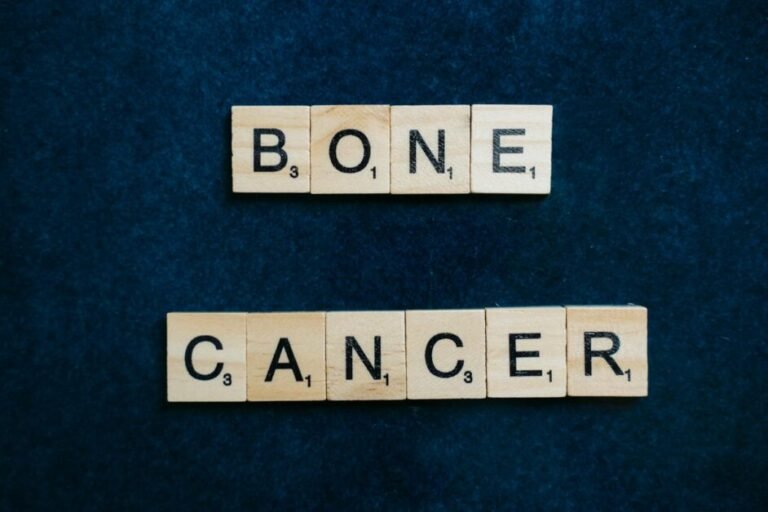Introduction
Definition of holistic approaches to pain management
Definition of holistic approaches to pain managementHolistic approaches to pain management in alternative medicine refer to a comprehensive and integrated approach that takes into account the physical, emotional, mental, and spiritual aspects of an individual. Unlike conventional medicine, which often focuses solely on treating the symptoms of pain, holistic approaches aim to address the root causes of pain and promote overall well-being. These approaches recognize that pain is not just a physical sensation but can also be influenced by various factors such as stress, lifestyle, diet, and emotional well-being. By considering the whole person and their unique circumstances, holistic approaches to pain management seek to provide personalized and effective strategies that go beyond simply alleviating pain, but also enhance the individual’s quality of life and promote long-term healing.
Importance of alternative medicine in pain management
The importance of alternative medicine in pain management cannot be overstated. As traditional medical approaches often focus solely on symptom relief through medication or invasive procedures, alternative medicine offers a more holistic approach that addresses the underlying causes of pain. By considering the interconnectedness of the mind, body, and spirit, alternative medicine aims to promote overall well-being and restore balance in the body. Techniques such as acupuncture, herbal remedies, massage therapy, and mindfulness practices have shown promising results in alleviating pain and improving quality of life for many individuals. Moreover, alternative medicine empowers patients to take an active role in their own healing process, fostering a sense of control and self-efficacy. As a result, alternative medicine plays a vital role in pain management by providing effective, natural, and patient-centered approaches that complement conventional treatments.
Overview of the article
The article “Holistic Approaches to Pain Management in Alternative Medicine” provides a comprehensive overview of various holistic strategies and techniques used in alternative medicine for managing pain. It explores the concept of holistic health, which emphasizes the interconnectedness of the mind, body, and spirit in achieving overall well-being. The article delves into the different alternative therapies commonly employed, such as acupuncture, herbal medicine, chiropractic care, and mindfulness practices. Additionally, it discusses the growing body of scientific evidence supporting the effectiveness of these holistic approaches in alleviating pain and improving quality of life. Overall, this article serves as a valuable resource for individuals seeking alternative methods to manage pain and enhance their overall health and well-being.
Acupuncture
Explanation of acupuncture as a holistic approach
Acupuncture is a widely recognized holistic approach to pain management in alternative medicine. Originating from ancient Chinese practices, it involves the insertion of thin needles into specific points on the body to stimulate energy flow and restore balance. According to traditional Chinese medicine, pain is believed to be caused by an imbalance or blockage in the body’s energy pathways, known as meridians. Acupuncture aims to address these imbalances by promoting the body’s natural healing abilities and restoring harmony within the body. By targeting the root cause of pain rather than just the symptoms, acupuncture offers a holistic approach that considers the interconnectedness of the mind, body, and spirit. This approach not only provides pain relief but also supports overall well-being and promotes a sense of balance and harmony within the individual.
How acupuncture helps in pain management
Acupuncture, a key component of alternative medicine, has been widely recognized for its effectiveness in pain management. This ancient Chinese practice involves the insertion of thin needles into specific points on the body to stimulate the flow of energy, known as qi. By targeting these specific points, acupuncture helps to restore balance and harmony within the body, thereby alleviating pain. It is believed that acupuncture stimulates the release of endorphins, which are natural pain-relieving chemicals in the body. Additionally, this holistic approach to pain management is thought to improve blood circulation and reduce inflammation, further contributing to pain relief. Many individuals have reported significant improvements in their pain levels and overall well-being after undergoing acupuncture treatments. As a non-invasive and drug-free alternative, acupuncture offers a promising avenue for individuals seeking natural pain management solutions.
Research and evidence supporting the effectiveness of acupuncture
Research and evidence supporting the effectiveness of acupuncture has been steadily growing, providing a strong foundation for its integration into holistic approaches to pain management in alternative medicine. Numerous studies have demonstrated that acupuncture can effectively alleviate various types of pain, including chronic pain conditions such as osteoarthritis, migraines, and lower back pain. For instance, a systematic review published in the Journal of Pain found that acupuncture was significantly more effective than sham acupuncture or no treatment in reducing chronic pain intensity. Additionally, neuroimaging studies have shown that acupuncture stimulates the release of endogenous opioids, which are natural pain-relieving substances in the body. These findings, along with the increasing number of positive clinical trials, highlight the potential of acupuncture as a valuable therapeutic modality for pain management within the realm of alternative medicine.
Herbal Medicine
Overview of herbal medicine in pain management
Overview of Herbal Medicine in Pain ManagementHerbal medicine has been utilized for centuries as a natural and holistic approach to pain management. It involves the use of plant-based remedies and extracts to alleviate pain and promote overall well-being. Herbal medicine offers a wide range of options for pain relief, including anti-inflammatory herbs such as turmeric and ginger, analgesic herbs like willow bark and cloves, and sedative herbs such as valerian and chamomile. These herbs can be consumed in various forms, such as teas, tinctures, capsules, or applied topically as creams or oils. The effectiveness of herbal medicine in pain management lies in its ability to target the underlying causes of pain, rather than merely masking the symptoms. Additionally, herbal remedies often have fewer side effects compared to conventional pain medications, making them a popular choice for individuals seeking natural alternatives. However, it is important to consult with a qualified herbalist or healthcare professional before incorporating herbal medicine into a pain management regimen, as they can provide guidance on appropriate dosages and potential interactions with other medications.
Commonly used herbs for pain relief
Commonly used herbs for pain relief have been extensively studied and utilized in alternative medicine practices. These natural remedies offer a holistic approach to pain management, addressing both the physical and emotional aspects of discomfort. One widely recognized herb is turmeric, known for its anti-inflammatory properties that can alleviate pain caused by conditions such as arthritis. Another commonly used herb is ginger, which has been found to reduce muscle soreness and ease joint pain. Additionally, the analgesic effects of willow bark have been compared to those of aspirin, making it a popular choice for relieving headaches and mild to moderate pain. These herbs, among others, provide individuals with alternative options for pain relief, promoting overall well-being and minimizing the reliance on pharmaceutical interventions.
Safety considerations and potential side effects of herbal medicine
Safety considerations and potential side effects of herbal medicine are crucial aspects to be aware of when considering holistic approaches to pain management in alternative medicine. While herbal remedies are generally considered safe, it is important to note that they can still have potential risks and adverse effects. Some herbs may interact with prescription medications, leading to unwanted complications. Additionally, individuals may experience allergic reactions or gastrointestinal disturbances when using certain herbal remedies. It is essential to consult with a qualified healthcare professional or herbalist before incorporating herbal medicine into a pain management regimen, especially if one has pre-existing medical conditions or is taking other medications. By doing so, individuals can ensure that they are using herbal remedies safely and effectively, minimizing the risk of any potential side effects.
Mind-Body Techniques
Explanation of mind-body techniques
Explanation of mind-body techniquesMind-body techniques are an integral part of holistic approaches to pain management in alternative medicine. These techniques recognize the interconnectedness of the mind and body, and aim to promote healing by addressing both aspects simultaneously. By harnessing the power of the mind, individuals can learn to influence their physical well-being and alleviate pain. One commonly used mind-body technique is meditation, which involves focusing the mind and achieving a state of deep relaxation. Through regular practice, meditation can help individuals develop a heightened sense of self-awareness and control over their pain. Another technique is guided imagery, where individuals use their imagination to create positive mental images that promote relaxation and healing. By engaging the mind in this way, individuals can effectively reduce pain and enhance their overall well-being. Additionally, techniques such as yoga and tai chi combine physical movements with mental focus and breath control, promoting relaxation, flexibility, and pain relief. Overall, mind-body techniques offer a holistic approach to pain management, empowering individuals to actively participate in their healing process and improve their quality of life.
Examples of mind-body techniques for pain management
Examples of mind-body techniques for pain management include meditation, which involves focusing the mind and achieving a state of deep relaxation to alleviate pain. This technique has been found to be effective in reducing both acute and chronic pain by promoting a sense of calm and reducing stress levels. Another technique is guided imagery, where individuals use their imagination to create positive mental images that can help distract from pain and promote relaxation. Additionally, progressive muscle relaxation involves systematically tensing and then relaxing different muscle groups to release tension and reduce pain. These mind-body techniques offer individuals alternative approaches to pain management that can complement traditional medical treatments and provide a holistic approach to overall well-being.
Benefits of incorporating mind-body techniques in pain management
Incorporating mind-body techniques in pain management can offer numerous benefits for individuals seeking alternative approaches. One significant advantage is the potential to reduce reliance on medication and invasive procedures. By focusing on the connection between the mind and body, these techniques aim to address the root causes of pain, such as stress, anxiety, and emotional distress. Mind-body techniques, including meditation, yoga, and guided imagery, can help individuals develop coping mechanisms and enhance their overall well-being. These practices promote relaxation, improve sleep quality, and reduce muscle tension, ultimately leading to a decrease in pain intensity and frequency. Additionally, mind-body techniques empower individuals to actively participate in their pain management, fostering a sense of control and self-efficacy. By incorporating these holistic approaches, individuals can experience a comprehensive and integrative approach to pain management that not only alleviates symptoms but also promotes overall physical and mental health.
Massage Therapy
Overview of massage therapy as a holistic approach
Massage therapy is a widely recognized holistic approach to pain management in alternative medicine. It involves the manipulation of soft tissues in the body, such as muscles, tendons, and ligaments, to promote relaxation, reduce muscle tension, and alleviate pain. This approach focuses on treating the body as a whole, rather than just targeting specific symptoms or areas of discomfort. Massage therapy not only addresses physical pain but also aims to improve overall well-being by enhancing circulation, reducing stress, and promoting a sense of relaxation and balance. With its emphasis on the interconnectedness of the mind, body, and spirit, massage therapy offers a comprehensive and holistic approach to pain management that can be beneficial for individuals seeking alternative methods of healing.
Different types of massage techniques for pain relief
Different types of massage techniques offer effective pain relief for individuals seeking alternative approaches to pain management. One such technique is Swedish massage, which involves long, flowing strokes to promote relaxation and improve circulation. Deep tissue massage, on the other hand, targets the deeper layers of muscles and connective tissues to alleviate chronic pain and muscle tension. Trigger point therapy focuses on specific areas of muscle knots or trigger points to release tension and reduce pain. Additionally, aromatherapy massage combines the benefits of massage with the use of essential oils to enhance relaxation and pain relief. These various massage techniques provide individuals with a range of options to address their specific pain concerns and improve their overall well-being.
Research on the effectiveness of massage therapy in pain management
Research on the effectiveness of massage therapy in pain management has shown promising results. Numerous studies have demonstrated that massage therapy can effectively reduce pain and improve overall well-being in individuals suffering from various conditions, such as chronic low back pain, fibromyalgia, and osteoarthritis. For instance, a systematic review published in the Journal of Pain Medicine found that massage therapy significantly reduced pain intensity and improved physical functioning in patients with chronic low back pain. Additionally, another study published in the Journal of Clinical Rheumatology showed that massage therapy provided significant pain relief and improved quality of life in individuals with fibromyalgia. These findings suggest that massage therapy can be a valuable holistic approach to pain management in alternative medicine, offering a safe and non-invasive option for individuals seeking relief from pain.
Chiropractic Care
Explanation of chiropractic care in olistic approaches to pain management
Explanation of chiropractic care in pain managementChiropractic care is a widely recognized and utilized approach in alternative medicine for pain management. This form of treatment focuses on the relationship between the spine and the nervous system, with the belief that misalignments or subluxations in the spine can lead to various health issues, including pain. Chiropractors use manual adjustments and manipulations to correct these misalignments, aiming to restore proper alignment and function to the spine. By doing so, chiropractic care aims to alleviate pain, improve mobility, and enhance overall well-being. This non-invasive and drug-free approach to pain management has gained popularity due to its holistic nature, addressing the root cause of pain rather than solely focusing on symptom relief. Chiropractic care is often sought after for conditions such as back pain, neck pain, headaches, and joint pain, with many individuals finding significant relief and improved quality of life through regular chiropractic treatments.
Common conditions treated by chiropractors
Chiropractors are healthcare professionals who specialize in diagnosing and treating musculoskeletal disorders, particularly those affecting the spine. They employ a holistic approach to pain management, focusing on the body’s natural ability to heal itself. Common conditions treated by chiropractors include back pain, neck pain, headaches, and joint pain. Chiropractic care aims to address the underlying causes of these conditions rather than simply alleviating symptoms. Through manual adjustments, spinal manipulations, and other therapeutic techniques, chiropractors aim to restore proper alignment and function to the spine and other affected areas of the body. By doing so, they help patients find relief from pain and improve their overall well-being.
Evidence supporting the use of chiropractic care for pain relief
Evidence supporting the use of chiropractic care for pain relief is substantial and continues to grow. Numerous studies have demonstrated the effectiveness of chiropractic interventions in alleviating various types of pain, including low back pain, neck pain, and headaches. For instance, a systematic review published in the Journal of Manipulative and Physiological Therapeutics found strong evidence supporting the use of chiropractic care for acute and chronic low back pain. Additionally, a study published in the Annals of Internal Medicine showed that spinal manipulation provided by chiropractors was more effective in relieving neck pain than medication. These findings, along with many others, highlight the significant role that chiropractic care can play in pain management within the realm of alternative medicine.







